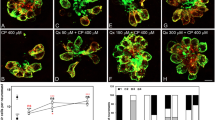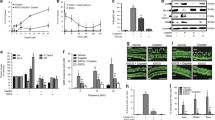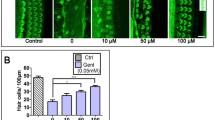Abstract
Various compounds have been tested in recent years for protection against cisplatin-induced hearing loss, but no compound has yet been FDA approved for clinical use in patients. Towards this goal, we developed an unbiased, high-throughput, mammalian cochlear cell-based chemical screen that allowed quantification of the protection ability of bioactive compounds and ranked them for future testing ex vivo in cochlear explant cultures and in vivo in animal models. In our primary screens, protection in the HEI-OC1 organ of Corti immortalized cell line was measured by the ability of each compound to inhibit caspase-3/7 activity triggered by cisplatin treatment (50 μM cisplatin for 22 h). A total of 4385 unique bioactive compounds were tested in a single dose of 8 μM and promising compounds were validated by dose response curves covering ten, 1:3 serial diluted concentrations. Primary hits were defined as having more than 60 % inhibition of the caspase-3/7 activity. Toxicity of the top compounds was measured by a CellTiter-Glo (CTG) assay that measured the viability of the cells in the presence of compound alone in similar dose responsive analysis. A combination of the caspase-3/7 inhibition activity assay (as measured by IC50) and the CTG viability assay (as determined by LD50) identified the top protective compounds in the HEI-OC1 cells. In the future, the top hits in our screens will be tested for their protective ability ex vivo in mouse cochlear explants and in vivo in animal models. Our mammalian cochlear cell-based, high-throughput chemical screening assays described here can be further modified and represent an initial successful step towards therapeutic intervention of hearing disorders, an unmet medical need of our society.
Access this chapter
Tax calculation will be finalised at checkout
Purchases are for personal use only
Similar content being viewed by others
References
Macarron R, Banks MN, Bojanic D et al (2011) Impact of high-throughput screening in biomedical research. Nat Rev Drug Discov 10:88–195
Sharma LK, Leonardi R, Lin W (2015) A high-throughput screen reveals new small-molecule activators and inhibitors of Pantothenate kinases. J Med Chem 58:1563–1568
Wang P, Alvarez-Perez J, Felsenfeld DP et al (2015) A high-throughput screen reveals that harmine-mediated inhibition of DYRK1A increases human pancreatic beta cell replication. Nat Med 21:383–390
Walters JB, Lin W, Diao S et al (2014) High-throughput screening reveals alsterpaullone, 2-cyanoethyl as a potent p27Kip1 transcriptional inhibitor. PLOS One 9:e91173
Edge A et al (2013) Patent: small molecule compounds to treat hearing loss. International publication number WO 2013/126805 A2
Ryals M, Pak K, Ryan A (2015) Kinase inhibitor library screen to identify targets involved in aminoglycoside-induced ototoxic damage to murine organ of Corti. ARO 38th annual meeting PS-293, 38:176–177
Ou HC, Cunningham LL, Francis SP, Brandon CS, Simon JA, Raible DW, Rubel EW (2009) Identification of FDA-approved drugs and bioactives that protect hair cells in the zebrafish (Danio rerio) lateral line and mouse (Mus musculus) utricle. J Assoc Res Otolaryngol 10:191–203
Ou HC, Santos F, Raible DW, Simon JA, Rubel EW (2010) Drug screening for hearing loss: using the zebrafish lateral line to screen for drugs that prevent and cause hearing loss. Drug Discovery Today 15:265–271
Vlasits AL, Simon JA, Raible DW, Rubel EW, Owens KN (2012) Screen of FDA-approved drug library reveals compounds that protect hair cells from aminoglycosides and cisplatin. Hear Res 294:153–165
Ou H, Simon JA, Rubel EW, Raible DW (2012) Screening for chemicals that affect hair cell death and survival in the zebrafish lateral line. Hear Res 288:58–66
Niihori M, Platto T, Igarashi S et al (2015) Zebrafish swimming behavior as a biomarker for ototoxicity-induced hair cell damage: a high-throughput drug development platform targeting hearing loss. Transl Res. 166(5):440–450
Kalenic GM, Webster P, Lim DJ, Kalenic F (2003) A cochlear cell line as an in vitro system for drug ototoxicity screening. Audiol Neurootol 8:177–189
Zhang JH, Chung TD, Oldenburg KR (1999) A simple statistical parameter for use in evaluation and validation of high throughput screening assays. J Biomol Screen 4(2):67–73
Chirtes F, Albu S (2014) Prevention and restoration of hearing loss associated with the use of cisplatin. BioMed Res Int. doi:10.1155/2014/925485
Marshak T, Steiner M, Kaminer M, Levy L, Shupak A (2014) Prevention of cisplatin-induced hearing loss by intratympanic dexamethasone: a randomized controlled study. Otolaryngol Head Neck Surg 150:983–990
Mukherjea D, Rybak LP, Sheehan KE, Kaur T, Ramkumar V, Jajoo S, Sheth S (2011) The design and screening of drugs to prevent acquired sensorineural hearing loss. Expert Opin Drug Discov 6:491–505
Schacht J, Talaska AE, Rybak LP (2012) Cisplatin and aminoglycosides antibiotics: hearing loss and its prevention. Anat Rec 295:1837–1850
Wong ACY, Ryan AF (2015) Mechanisms of sensorineural cell damage, death and survival in the cochlea. Front Aging Neurosci 7:58
Casares C, Ramirez-Camacho R, Trinidad A, Roldan A, Jorge E, Garcia-Berrocal JR (2012) Reactive oxygen species in apoptosis induced by cisplatin: review of physiopathological mechanisms in animal models. Eur Arch Otorhinolaryngol 269:2455–2459
Rybak LP, Ramkumar V (2007) Ototoxicity. Kidney Int 72:931–935
Forge A, Van De Water TR (2008) Protection and repair of inner ear sensory cells. In: Salvi RJ, Popper AN, Fay RR (eds) Hair cell regeneration, repair, and protection. Springer Science, New York, pp 199–256
Liu W, Staecker H, Stupak H, Malgrange B, Lefebvre P, Van De Water TR (1998) Caspase inhibitors prevent cisplatin-induced apoptosis of auditory sensory cells. Neuroreport 9:2609–2614
Yakovlev AG, Faden AI (2001) Caspase-dependent apoptotic pathways in CNS injury. Mol Neurobiol 24:131–144
Kim H, Lee J, Kim S et al (2010) Roles of NADPH oxidases in cisplatin-induced reactive oxygen species generation and ototoxicity. J Neurosci 30:3933–3946
Zhang M, Liu W, Ding D, Salvi R (2003) Pifithrin-α suppresses p53 and protects cochlear and vestibular hair cells from cisplatin-induced apoptosis. Neuroscience 120:191–205
Ding D, Allman BL, Salvi R (2012) Review: ototoxic characteristics of platinum antitumor drugs. Anat Rec 295:1851–1867
Iversen PW, Beck B, Chen Y-F et al (2004) HTS assay validation. In: Sittampalam GS, Gal-Edd N, Arkin M et al (eds) Assay guidance manual [Internet]. Eli Lilly & Co. and the National Center for Advancing Translational Sciences, Bethesda, MD. http://www.ncbi.nlm.nih.gov/books/NBK83783/. Accessed 29 Sept 2014
Chai SC, Goktug AN, Chen T (2015) Assay validation in high throughput screening—from concept to application. In: Vallisuta O (ed) Drug discovery and development—from molecules to medicine. InTech, Rijeka, Croatia
Chai SC, Goktug AN, Cui J, Low J, Chen T (2013) Practical considerations of liquid handling devices in drug discovery. In: El-Shemy H (ed) Drug discovery. InTech, Rijeka, Croatia
Goktug AN, Chai SC, Chen T (2013) Data analysis approaches in high throughput screening. In: El-Shemy H (ed) Drug discovery. InTech, Rijeka, Croatia
Acknowledgments
This work was supported in part by grants from the NIH (DC006471, CA21765, DC013879), the Office of Naval Research (N00014-12-1-0191, N00014-12-1-0775, N00014-09-1-1014) and the American Lebanese Syrian-Associated Charities of St. Jude Children’s Research Hospital. We thank Drs. Federico Kalinec and Gilda Kalinec at the House Research Institute for providing the HEI-OC1 cells.
Author information
Authors and Affiliations
Corresponding author
Editor information
Editors and Affiliations
Rights and permissions
Copyright information
© 2016 Springer Science+Business Media New York
About this protocol
Cite this protocol
Teitz, T., Goktug, A.N., Chen, T., Zuo, J. (2016). Development of Cell-Based High-Throughput Chemical Screens for Protection Against Cisplatin-Induced Ototoxicity. In: Sokolowski, B. (eds) Auditory and Vestibular Research. Methods in Molecular Biology, vol 1427. Humana Press, New York, NY. https://doi.org/10.1007/978-1-4939-3615-1_22
Download citation
DOI: https://doi.org/10.1007/978-1-4939-3615-1_22
Published:
Publisher Name: Humana Press, New York, NY
Print ISBN: 978-1-4939-3613-7
Online ISBN: 978-1-4939-3615-1
eBook Packages: Springer Protocols




